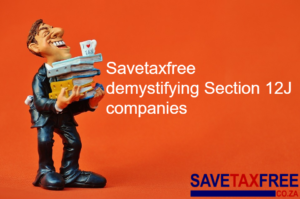Optimise your investment portfolio with a TFSA
Story Highlights
- Emperor Asset Management
- Standard Bank
- Stanlib
Related Articles
The best tax-free investment options for you
By Nonhlanhla Kunene
Tax-free savings accounts have brought a whole new dimension of pros and cons to consider when structuring an investment portfolio, for experienced and novice investors alike. Chief among these is the question of how a TFSA can be incorporated into an existing or new portfolio to maximise returns.
Importantly, say financial experts we interviewed, diversification remains the backbone of any well-structured portfolio. A second point is to remember that for regular cash savings (eg, a fixed interest account with a bank), the first R23 800 on interest is exempt from tax anyway. To maximise the tax benefit, using the TFSA for other asset classes such as equities therefore makes more sense. That leads to the third point, which is that TFSAs should be used for long-term investments as, historically, equities are the best-performing asset class over time.
There are two main vehicles through which TFSAs can invest in equities, exchange-traded funds (ETFs) and unit trusts, because direct investments in individual shares on the JSE are not allowed. ETFs are traded on the JSE like a share, but they are funds which invest in a defined set of shares or other tradeable instruments. For example, a top 40 ETF invests only in the 40 biggest companies on the JSE. Unit trusts are similar but are not listed.
 Mark Humphreys, who heads up Standard Online Share Trading’s TFSA offering, feels the opportunities to maximise gains by incorporating a TFSA into an existing portfolio, for both the novice and experienced investor, are plentiful. “For someone with an established portfolio or who already invests regularly, it makes sense to invest the first R30 000 (the maximum non-taxable amount allowed per year) of each tax year into a TFSA.
Mark Humphreys, who heads up Standard Online Share Trading’s TFSA offering, feels the opportunities to maximise gains by incorporating a TFSA into an existing portfolio, for both the novice and experienced investor, are plentiful. “For someone with an established portfolio or who already invests regularly, it makes sense to invest the first R30 000 (the maximum non-taxable amount allowed per year) of each tax year into a TFSA.
“For first-time investors the TFSA is the ideal place to start. It is comparatively cheap and has a suitably broad selection of asset classes without also being overwhelming. The traditional stance of passive investing, which is well suited to novice investors, is to accept that taking risk in the market often leads to favourable returns and thus it makes sense to ‘buy the market’ as opposed to trying to ‘beat it’ with more complex strategies. This is exactly what ETFs offer.”
The advantage of TFSAs, particularly to new investors, Humphreys feels, is in their ability to give exposure to the core building blocks of a balanced portfolio including various equity indices, property, commodities, offshore indices and debt. “This is particularly important to novice investors as building a well-balanced portfolio is the first step in wealth creation and preservation.”
Anthony Katakuzinos, Stanlib’s retail chief operating officer, emphasises that a TFSA is an investment you should keep for a long period. “Because of the tax saving, a TFSA is potentially the last place people will draw from if they need money. So it’s a good way of promoting long-term savings.”
Keeping your investment over a long period, however, makes selecting the right investment from the onset a crucial part of the investment process. “We say to investors, be careful in what you choose because you will be looking at keeping it until retirement and potentially after that because you can then draw tax-free income,” says Katakuzinos
“You’ll probably have the TFSA for more than 30 years so you need something that is flexible to meet your changing needs. Fixed interest is no good for that.”
Katakuzinos believes the flexibility offered by unit trusts makes them a good option for TFSA investments because they can cover everything from low-risk options to global equity investments, making them the most viable option for meeting long-term needs which change over time. Different unit trusts can be selected to suit an investor’s changing needs and risk profile.
On the issue of TFSAs and retirement, the general consensus is that, while TFSAs are a great investment vehicle, they should not be used as a substitute for a solid retirement plan. A retirement annuity (RA), for example, has its own tax benefits. Rather, the TFSA should act as a supplementary investment to complement an existing retirement plan.
 One person willing to go against the tide on this view is Charles Savage, CEO of Emperor Asset Management. He says the long-term returns from equity TFSAs, for a young investor, outweigh the returns from a traditional RA.
One person willing to go against the tide on this view is Charles Savage, CEO of Emperor Asset Management. He says the long-term returns from equity TFSAs, for a young investor, outweigh the returns from a traditional RA.
“Tax-free investments are going to disrupt the industry and are a no brainer for younger people who want to start investing. Investing in a tax-free account with equity exposure is the first thing they should do. The younger you are the more beneficial it will be because of the nearly 17 years (16.6 to be exact) you have to reinvest before you reach your lifetime limit.”
Savage has a number of reasons to support his argument.
The first is that young investors are typically in a lower tax bracket than when they retire – which is when tax on an RA comes into play. Contributions to a TFSA are not tax deductible but the returns are tax-free. Contributions to an RA are tax deductible while withdrawals on retirement are taxable.
Savage says his firm’s calculations have shown that for young investors, the tax on income is probably lower than the tax they will be paying upon retirement when they start drawing out of the RA.
Cost structures are another reason Savage opts for the TFSA route over more expensive RAs. “The cost benefits of a TFSA with equity exposure when compared to a retirement annuity are between 2% and 3% a year. Compounded over time, this can make a significant impact on your returns.”
The set of laws governing RAs also make them less appealing, says Savage. “A TFSA can buy you the same products as a retirement annuity for far less fees, and give you greater flexibility.” For example, a TFSA investor can invest 100% in equities or 100% offshore, while an RA has exposure limits to each asset class.
While Savage feels TFSAs have many advantages, he does point out drawbacks in that the product is still young and therefore National Treasury has limited the available options. For example, direct investments in JSE shares are not allowed but equity investments have to be made via ETFs or unit trusts.






